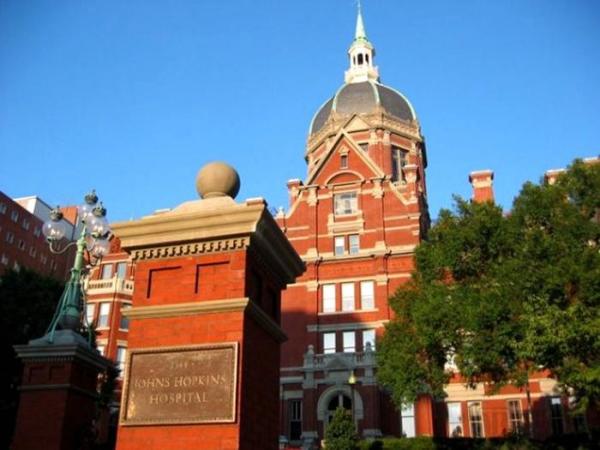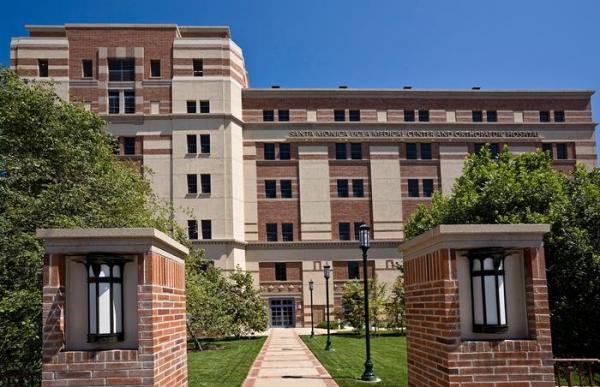In recent years, capital has gathered medical AI. Since 2014, the number of domestic medical AI companies has entered a period of rapid growth. In 2016, it has reached 36, and by 2018 this number has exceeded 50. While closely observing these enterprises, we found that there are many "medical + AI" ideas, and there are always products launched at the technical level, and there are few domestic commercial applications in the application scenarios.
On April 17th, the article "Artificial AI commercialization landing" of the arterial network "Hirsch Isomerization and Huaxi Hospital in-depth cooperation, out of a set of their own model" reported that Heis heterogeneous deep cultivation Huaxi Hospital, explore its commercialization The case of the road.
As Song Jie, founder and CEO of Hewlett-Packard, said that the domestic medical AI business is facing many bottlenecks, such as the “section + AI†model of segmentation can not form a synergy to trigger real change, the legal barriers to data collection are too high. The inability to achieve the "quantity" demand, the weak technical research and development capabilities of the technology vendors can not transform the technical achievements into the final product. This undoubtedly restricts the artificial intelligence technology to play a substantial role in improving the medical industry's dysentery.
So how to solve these problems? Domestic AI companies have made many attempts, and the arterial network has been tracking reports. Now let's change our mindset and turn our perspective to the big hospitals in the US to see how they apply AI. For more than 100 years, the United States has been able to quickly innovate its innovations into real-world scenarios and become the biggest beneficiaries of technological change.
In order to help patients narrow the scope of medical search, "United States News and World Report" will publish the "Best Hospital Honor List" every year. In this article, we selected the top five hospitals in the 2017-2018 list, namely the Mayo Clinic, the Cleveland Clinic, the Massachusetts General Hospital, Johns Hopkins Hospital, and the UCLA Medical Center.
Mayo Clinic: Join hands with startups to focus on fatal disease predictions and personalized treatments
The Mayo Clinic is located in Rochester, Minnesota, USA and is one of the world's most famous medical institutions. The Mayo Clinic was founded in 1889 and has now become a comprehensive health care system, including outpatient, hospital, medical research and medical education institutions.

Image from Mayo Clinic official website
In January 2017, the Mayo Clinic Personalized Medical Center announced a partnership with Tempus to provide personalized treatment for cancer patients based on analytical and machine learning techniques.
The Mayo Clinic has partnered with the Tempus program to conduct two studies. Tempus performed molecular sequencing and analysis of 1,000 patients at the Mayo Clinic to obtain genomic results that can be sequenced for clinical grade tumors. Subsequently, Tempus used bioinformatics analysis and machine learning tools to generate these genomic results for data that was directly available to the Mayo Clinic research team. The Mayo Clinic can use this data to develop personalized cancer treatments for patients to minimize the need for ineffective drugs, thereby reducing unnecessary drug toxicity. The Mayo Clinic believes that the most important thing is that personalized cancer treatment will improve patient survival and improve patients' quality of life.
Eric Lefkovski, Tempus CEO, points out that technology has made incredible progress over the past two decades, but it has not yet fully penetrated into the medical system. “We are excited to bring Tempus' operating system and analytical technology to the Mayo Clinic to benefit the cancer war for doctors and patients.â€
Tempus is a health technology startup focused on developing personalized cancer care using a machine learning platform. Tempus created data pipelines for collecting and analyzing massive amounts of data, as well as pipeline power software applications to assist with clinical decision support and academic research. Tempus also has its own CLIA-certified laboratory, which currently has more than 50,000 patients each year. For three years since its inception, Tempus has consistently pursued the company's mission to accumulate vast amounts of genomic and clinical data from cancer patients so that doctors can use this information to better personalize treatment.
In addition, in March 2017, Mayo Clinic and medical device manufacturer Omron Healthcare completed a D round of investment in heart health startup AliveCor with a total investment of 30 million US dollars, which was reported by Arterial Network. (For details, see "Investing $30 Million in Omron and Mayo Clinic! AliveCor, a smart ECG company, is launching a new generation of AI panels").
In July 2017, the Mayo Clinic teamed up with AliveCor to combine AliveCor's AI technology with the Mayo Clinic's patented algorithms to develop tools that help medical and non-medical personnel easily screen long QT syndrome. Long QT is an innate acquired disease that kills between 3,000 and 4,000 American children and young people each year, and 160,000 people in the United States are at high risk.
Through this collaboration, Kardia Mobile will develop new methods and technologies for detecting long QT syndrome. AliveCor has patented artificial intelligence technology, algorithms and millions of ECG data. The Mayo Clinic has massive medical data and world-leading clinical expertise, and the integration will enable people to practice preventive medicine on an unprecedented scale. And provide instant results that were previously unavailable. Patients are able to more fully understand their heart health and proactively monitor and create new standards for cardiac care. Electrocardiograms contain a wealth of information about a person's overall health and apply machine learning to millions of ECG records as an important improvement to traditional ECG analysis.
AliveCor is a smartphone ECG device manufacturer and one of the partners in Apple's mobile phone. AliveCor's flagship product, Kardia Mobile, and the upgraded product, Kardio Pro, allow patients to collect their own ECGs at any time and email the results to physicians. It is the first clinically validated and FDA-approved ECG consumer product. Kardio Pro is an improved version of Kardia Mobile using AliveCor's artificial intelligence technology. It uses ECG data as a background to track patient blood pressure, weight, and activity. The data is placed in the same panel for comprehensive comparison. Through machine learning, the Kardio Pro system circles patients who need to be focused on by doctors and identifies healthy people who can be ignored and ignored.
Cleveland Clinic: Teaming up with Microsoft to optimize nighttime monitoring of ICU patients
The Cleveland Clinic is located in Ohio, USA and is owned and operated by the non-profit Cleveland Clinic Foundation. Founded in 1921, the Cleveland Clinic is a non-profit organization that combines medical, research and education to provide professional medical care and the latest treatment options. The Cleveland Clinic pioneered many of the first medical fields, such as the first coronary angiography, the first minimally invasive heart valve surgery, and the first fMRI-guided deep brain stimulation.

Image from Cleveland Clinic official website
In September 2016, the Cleveland Clinic partnered with Microsoft to use the Microsoft AI Digital Assistant Cortana for predictive and advanced analysis to help Cleveland Clinic “determine potential high-risk patients with cardiac arrest based on ICU careâ€.
As early as 2014, the Cleveland Clinic launched its own command center eHospital to enable night-time remote monitoring of patients in the ICU. The cooperation with Microsoft allowed the eHospital system to integrate Cortana into a smarter one. In addition, the data collected from the eHospital system is stored in Microsoft's Azure SQL database, a cloud-based database designed for application developers. In the future, data collection points will be extended to patient vital signs and laboratory data.
According to Microsoft's 2016 annual report, Cortana is used for 126 million Windows 10 users per month and is part of the Microsoft Smart Cloud segment. Cortana's features include setting up notes, recognizing human language without the need to enter pre-defined commands in advance, and grabbing information from the Bing search engine to answer questions.
Massachusetts General Hospital: Joining NVIDIA to lead medical radiation
The Massachusetts General Hospital is a comprehensive hospital in Boston. It is Harvard University's largest medical education center and biomedical research base with a strong research atmosphere. The Massachusetts General Hospital was founded in 1811. To date, 11 Nobel laureates have been associated with the Massachusetts General Hospital, where they have been engaged in research or training.

Image from the Massachusetts General Hospital official website
In 2015, the Arterial Network reviewed the development of the Massachusetts General Hospital in the digital medical field (see "Telling the Internet at Massachusetts General Hospital" for details). As of press time in August 2015, the Massachusetts General Hospital has not yet attempted to apply machine learning to real-world scenarios.
Subsequently, in April 2016, NVIDIA announced that it has joined the Massachusetts General Hospital “Clinical Data Science Center†as a “Founding Technology Partnerâ€. At the time, NVIDIA had begun an artificial intelligence strategy, and the goal of the Clinical Data Science Center set up by Massachusetts General Hospital was to use medical AI to improve detection, diagnosis, treatment, and management of disease. In collaboration, NVIDIA installed the NVIDIA DGX-1 at Massachusetts General Hospital. According to NVIDIA, the NVIDIA DGX-1 is a "deep-learning supercomputer" GPU.
The Massachusetts General Hospital has a database of approximately 10 billion medical images that can be used to train deep neural networks using a large database of phenotypic, genetic, and imaging data. Using artificial intelligence, doctors can compare patients' symptoms, tests, and medical history with the opinions of a large number of other patients. Initially, the Massachusetts General Hospital Clinical Data Science Center focused on radiology and pathology, with exceptionally rich images and data that will be extended to genomics and electronic health records.
“We now have the ability to extend the field of radiology to the primary function of providing visual information for human interpretation,†said Keith J., vice president and executive director of radiology at Massachusetts General Hospital. Dreyer said in a statement, "Under the guidance of precision healthcare, we are entering the era of biometric quantification of radiation, and our analysis will be enhanced by algorithms learned from the diagnostic data of the vast patient population. No GPU processing. Ability, this is impossible."
Johns Hopkins Hospital: Joining hands with GE to achieve intelligent hospital management
Located in Baltimore, Maryland, USA, Johns Hopkins Hospital is a large general hospital that has been the best hospital in the United States for 23 consecutive years. Founded in 1889, Johns Hopkins Hospital is the teaching and research hospital at Johns Hopkins University.

Image courtesy of Johns Hopkins Hospital
In March 2016, Johns Hopkins Hospital announced the launch of the hospital command center, GE Healthcare Partners is its partner, responsible for the design and construction of the command center. The center uses predictive analytics to support more efficient operational processes to improve patient care management efficiency.
There are 22 monitors displaying real-time data in the command center. The scene is similar to the war room of NASA's military and space operations facilities, combining the latest systems engineering, predictive analytics and situational awareness.
The staff of the command center has 24 staff members, all of whom are drawn from different existing departments of the hospital. They are responsible for centrally managing the entire process from admission to discharge. On average, the center receives 500 messages per minute from John Hopkins Hospital from 14 different IT systems to generate real-time data. These data are refreshed every 30 seconds, covering everything from bed availability and operating room efficiency to patient status and staffing, and staff can take immediate steps to prevent or resolve bottlenecks, reduce patient wait times, coordinate services and reduce risk. Analysis of the collected data, the command center can also predict the occupancy of each floor in the next two days and the specific expected number of patients entering and leaving the day for the next three days.
The command center has been operating for some time and has achieved significant results in improving patient experience and operational outcomes. According to the Johns Hopkins report, its ability to receive patients with complex medical conditions from other hospitals nationwide has increased by 60%, the emergency department has increased patient bed speed by 30%, and postoperative operating room transfer delay has decreased by 70%. The number of patients discharged from the hospital increased by 21% in the afternoon.
UCLA Medical Center: Teaming up with IBM to build a medical chat robot
Founded in 1955 in Los Angeles, UCLA Medical Center is affiliated with the University of California and is a hospital that specializes in teaching hospitals.

Image courtesy of UCLA Medical Center
In March 2017, UCLA interventional radiologists used artificial intelligence to create a virtual radiologist (VIR) to provide clinical decision support for non-invasive radiologists.
VIR is a chat bot similar to online customer service created using IBM's Watson artificial intelligence computer natural language processing technology. IBM's Watson artificial intelligence computer provided more than 2,000 sample data points for VIR to simulate data received by a common interventional radiologist during a consultation session. VIR plans to use "deep learning," and as more data is entered, it becomes smarter.
VIR automatically responds to the clinician's questions via SMS and helps them choose the best course of treatment. For example, it can tell the questioner whether to perform a specific treatment for a patient with a particular allergy. “It's like texting with a human radiologist, but it uses artificial intelligence to respond automatically. This is the quickest way to get information, it's very well-planned information backed by medical data, so the result is better Patient care," said Dr. Kevin Seals, UCLA Radiology Resident and Application Programmer. If the query is more than the VIR automatic processing capability, VIR will provide the contact information of the interventional radiologist in the hospital to establish direct contact with the person.
Stone of other mountains
Artificial intelligence technology based on machine learning has occupied the capital market for more than two years. Participants from the earliest capital private equity, venture capital has spread to the large industrial enterprises at the product end, seems to verify its ability to change the world as a future trend.
Through the above analysis of the application of AI in the top hospitals in the United States, we found two points worthy of attention.
First, data barriers are minimized. In the United States, top hospitals usually choose to work with powerful head companies, such as the Cleveland Clinic teamed up with Microsoft, the Massachusetts General Hospital to team up with NVIDIA, Johns Hopkins Hospital to team up with GE, and the UCLA Medical Center to team up with IBM. Businesses are top companies in the field of technology. In addition, some head technology companies have chosen to work with a number of top hospitals during the same period, such as GE. This combination of strong and strong, even networked, can break down data barriers, enabling medical AI applications to be based on massive amounts of data, ensuring that machine learning has accurate artificial intelligence. In China, although some technology suppliers have chosen top hospitals as a breakthrough, but with limited strength and legal obstacles, medical AI applications are confined to the interior of the department or within the hospital, and the data barriers generated need not be said.
Second, the application scenario front-end. In general, the medical AI application segment is divided into disease prediction, hospital management, assisted diagnosis, precision surgery and health management. Unlike domestic medical AI, which focuses on assisted care, US major hospitals focus on disease predictions in the context of medical AI applications (eg Cleveland Clinic with Microsoft, Johns Hopkins vs. GE, UCLA Medical Center's VIR) and Health Management (such as the cooperation between Mayo Clinic and AliveCor) and other pre-positions. The ultimate goal of medical care is health, and the medical AI application and health chain can be more effective in improving social health.
The application of new technologies must be the process of exploration, summarization, and re-exploration. The summary in exploration can be inward or outward. In the future, the arterial network will continue to pay attention to the latest developments in medical AI business at home and abroad.
Neckbandhearing Aid,Neckband Hearing Headphones,Neckband Hearing Headsets
Neckbandhearing Aid,Neckband Hearing Headphones,Neckband Hearing Headsets
Shenzhen Sunshine Technology Co.,Ltd , https://www.szyatwin.com